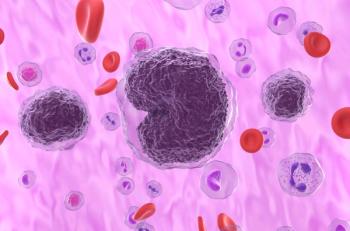
Researchers Outline Management Strategies for Growing Adult SMA Population
Due to advances in the treatment of spinal muscular atrophy (SMA), the lifespan of patients with the disease has increased significantly, allowing them to enter adulthood. However, the change in SMA prognosis has also led to a knowledge gap in the natural history, management, and treatment strategy for adult patients, according to the researchers.
With adults now accounting for one-third of cases of
Thanks to advances in the treatment of SMA, the lifespan of patients with the disease has increased significantly, allowing them to enter adulthood. However, the change in SMA prognosis has also led to a knowledge gap in the natural history, management, and treatment strategy for adult patients, according to the researchers.
“While the number of SMA patients living to adulthood or presenting as adults is increasing, standard of care consensus statements and therapeutics have largely focused on the pediatric SMA population. However, SMA can no longer be thought of as a disease that affects only children,” the group wrote. “As is true with the pediatric patients, adult SMA patients demonstrate progressive loss of function, fatigue, respiratory and swallowing difficulties but also the emotional effects of disease burden from the perspective of an adult, and like the pediatric patients are best served in a multidisciplinary clinic.”
Approved for all forms of the disease, nusinersen and risdiplam are used in the management of SMA in adults. Although there is a lack of randomized controlled trials assessing the treatments in adults, there are available data from observational studies of nusinersen. To date, there are no completed trials of risdiplam among adult patients.
Studies of nusinersen used in adult patients have shown clinically meaningful improvements in motor function, particularly for those with more a more mild presentation at baseline. In a recent study of 40 patients, researchers found improved lung function and improved Revised Upper Limb Module scores in those with a history of spinal fusion. However, there were no significant improvements in Hammersmith Functional Motor Scale Expanded scores.
Two other treatments—apitegromab and reldesemtiv—are also being investigated.
Outside of SMA-specific treatment, the researchers outlined other considerations relevant to managing adults with the disease, including musculoskeletal and respiratory management, the latter being a primary driver of the increased survival seen in SMA. The researchers emphasize the need for patients who are transitioning into adult care to visit a pulmonologist with experience in SMA.
“Routine surveillance is recommended to identify signs of hypoventilation so that bilevel noninvasive ventilation can be initiated as early as possible,” explained the researchers. “Continuous positive airway pressure (CPAP) should be avoided when evidence of restrictive lung disease is also present as it may cause muscle fatigue and does not increase tidal volumes. CPAP does not assist inspiratory muscle function but can be considered in patients with isolated obstructive sleep apnea. In patients who cannot tolerate ventilation or who fail treatment, there should be a discussion regarding tracheostomy. Any such discussion should reflect the patient’s goal of care.”
Musculoskeletal function should also be carefully monitored into adulthood, explained the researchers, citing concerns of scoliosis. Although previous understandings de-emphasized scoliosis management for patients with SMA type 1 because of their ability to sit independently, due to therapeutic improvements changing the course of disease, nearly all patients with SMA types 2 and 3 will develop scoliosis.
Reference
Rad N, Cai H, Weiss M. Management of spinal muscular atrophy in the adult population. Muscle Nerve. Published online February 26, 2022. doi:10.1002/mus.27519
Newsletter
Stay ahead of policy, cost, and value—subscribe to AJMC for expert insights at the intersection of clinical care and health economics.













































